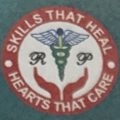Introduction: Understanding Hernias and Minimally Invasive Surgery
A hernia happens when an organ or tissue pushes through a weak spot in muscle or tissue. This can cause a lump or bulge. Many people worry about hernias, but treatment is often safe and effective. Today, doctors use minimally invasive hernia repair, such as laparoscopic and robotic surgery, to help patients heal faster. These methods use small cuts and special tools, making recovery easier for most people.
Types of Hernias
There are several types of hernias. Each type affects a different part of the body. Knowing the types of hernias can help you spot symptoms early. Here are the most common types:
Symptoms and Risk Factors of Hernias
Hernias can cause different symptoms. Sometimes, you may notice a bulge or swelling. Other times, you might feel pain, especially when lifting or coughing. Here are common symptoms:
Several factors can increase your risk of getting a hernia. For example, being overweight, lifting heavy objects, or having a family history of hernias can raise your risk. Other risk factors include:
Minimally Invasive Treatments for Hernias
Today, many hernias are fixed with minimally invasive hernia repair. This means doctors use small cuts and special tools to fix the problem. There are two main types:
Both methods are safe and effective. They usually cause less pain and help you heal faster than open surgery. According to the CDC, these techniques lower the risk of infection and help you return to normal activities sooner.
Benefits of Minimally Invasive Hernia Repair
Minimally invasive hernia repair offers many benefits. For instance, you may have:
Because the cuts are small, your body heals more quickly. Most people can go home the same day or the next day after surgery.
Recovery and Lifestyle Guidance After Surgery
After minimally invasive hernia repair, recovery is usually smooth. However, you should follow your doctor’s advice for the best results. Here are some tips for recovery:
Most people feel better within a week or two. Still, always check with your doctor before returning to work or exercise.
Prevention Tips for Hernias
While not all hernias can be prevented, you can lower your risk. For example, you can:
By following these tips, you can help protect your body from hernias.
Conclusion: Take Action for Your Health
Hernias are common, but minimally invasive hernia repair makes treatment easier and recovery faster. If you notice hernia symptoms or have concerns, consult a specialist for personalized guidance on hernia treatment. Early care can help you stay healthy and active.

